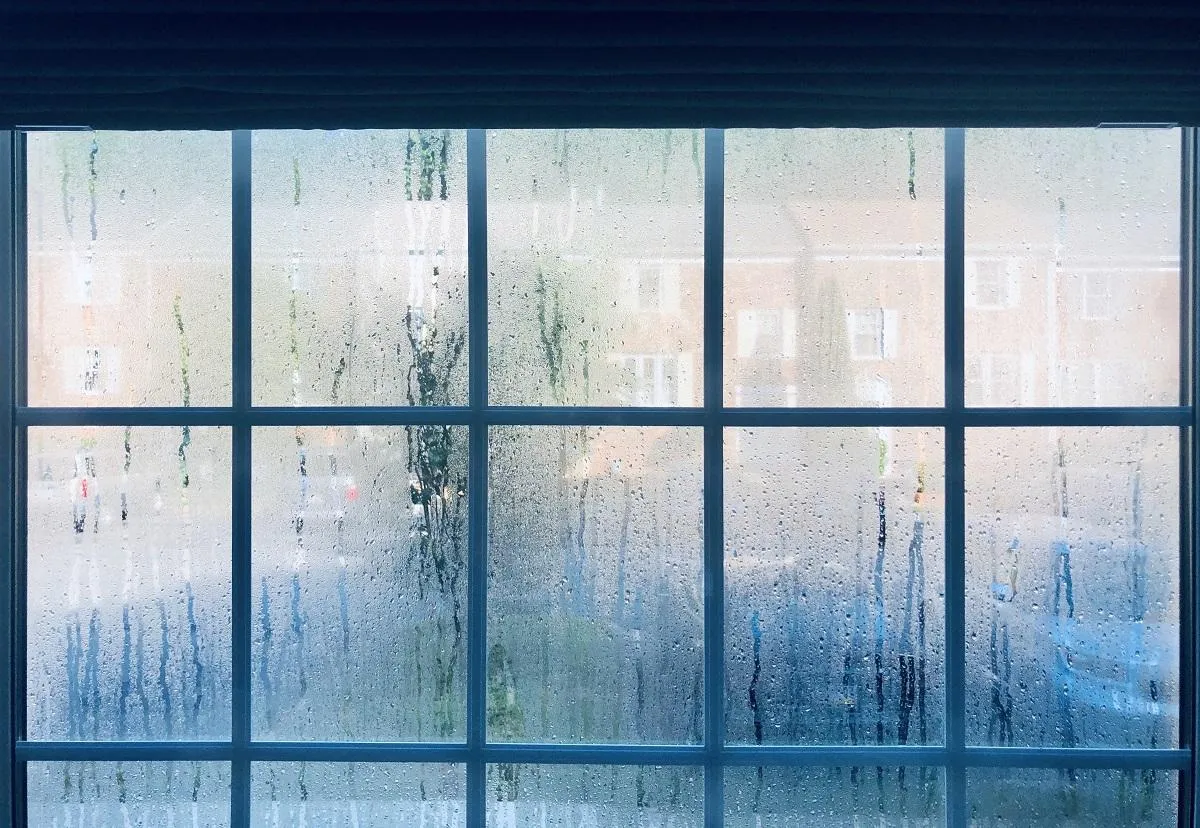
Fix Humidity Problems: Keep Your Home Comfortable & Healthy
Are Humidity Issues Affecting Your Comfort?
When we talk about home comfort, most people think about the temperature. But there's another crucial element that often flies under the radar—humidity. While it may seem like a minor concern, the truth is that humidity plays a massive role in how comfortable, healthy, and even structurally sound your home is.
Here in Tuscaloosa and surrounding areas, we face an uncomfortable reality: summer humidity soars, often feeling stifling and oppressive, while winter leaves us dry and brittle. These dramatic swings not only challenge your comfort but can also compromise your home’s integrity and your family’s health. So let’s take a deep dive into why maintaining indoor humidity between 35-45% year-round is more important than you may think—and how to achieve it.

Understanding Humidity and Its Effects
What Is Humidity?
Humidity is the amount of moisture present in the air. It’s usually expressed as a percentage—relative humidity (RH). When RH reaches 100%, the air is fully saturated and can’t hold any more moisture, leading to condensation and potential mold issues. Conversely, when RH drops too low, the air becomes excessively dry, causing a range of problems from irritated sinuses to structural damage in your home.
The U.S. Environmental Protection Agency (EPA) recommends keeping indoor relative humidity between 30% and 50% for optimal comfort and health. In this article, we’ll emphasize the sweet spot of 35% to 45% for year-round stability.
How Humidity Affects Your Home
Humidity fluctuations can be subtle, yet they wreak silent havoc on the structural elements and materials inside your house. Here are a few critical ways this occurs:
1. Material Expansion and Contraction
Wood is a hygroscopic material, which means it absorbs and releases moisture depending on the surrounding environment. In summer, high humidity causes wooden floors, furniture, window frames, and trim to absorb excess moisture and swell. This leads to warping, misaligned doors, sticky drawers, and popped nails in flooring. Come winter, the dry air sucks the moisture back out, causing shrinkage. Gaps in hardwood flooring, cracked trim, and split caulking are all signs of these seasonal moisture shifts.
This cycle of expansion and contraction isn’t just unsightly—it degrades materials over time, shortens their lifespan, and leads to frequent and costly repairs. If you’ve invested in high-end furnishings, custom woodwork, or heirloom antiques, proper humidity control is essential for preservation.
2. Mold Growth and Structural Decay
Humidity over 50% creates a breeding ground for mold, mildew, and even rot. While you may spot mold in obvious places like the corners of showers or around windows, the real concern lies behind the walls. Moisture seeps into insulation, drywall, and flooring, creating hidden colonies of mold that continue to grow unchecked.
If your home sits on a concrete slab—common in Alabama—it’s especially susceptible. Concrete acts like a sponge, absorbing moisture and holding it. This moisture can rise into the home, fostering mold under hardwood floors, carpet padding, or tile—places you won’t notice until it’s too late.
Mold not only damages building materials, but it also emits volatile organic compounds (VOCs) and spores into the air, compromising indoor air quality and triggering a host of health issues.

How Humidity Affects Your Health
Humidity isn’t just a comfort concern; it can directly impact your health and well-being.
1. High Humidity Health Risks
High humidity levels (above 50%) create an environment in which bacteria, viruses, and allergens thrive. Mold spores and dust mites increase, leading to respiratory issues, allergies, and even skin problems. Those with asthma, COPD, or other respiratory ailments will especially feel the effects.
Even more concerning is the potential for long-term neurological damage from mold exposure. Studies have shown that prolonged exposure to certain types of mold can mimic symptoms of neurological diseases such as Parkinson’s, multiple sclerosis, and chronic migraines. If family members begin experiencing unexplained health issues after moving into a new home, consider humidity and hidden mold as potential culprits.
2. Low Humidity Health Risks
On the flip side, low humidity—common in winter—dries out your skin, sinuses, and mucous membranes. This can lead to:
Cracked lips and dry skin
Nosebleeds and dry eyes
Sore throats and coughs
Increased susceptibility to colds and respiratory infections
Worsened snoring or sleep apnea
You may also experience frequent static shocks, which are more than just annoying—they’re an indicator that your air lacks sufficient moisture.
How Humidity Affects Your Comfort
Comfort isn’t just about temperature. If you’ve ever walked into a room and felt stuffy, sticky, or clammy, that’s likely high humidity at work. Conversely, if you’ve ever felt a sharp, dry chill that seems to cut right through you in winter, that’s likely low humidity.
Summer Discomfort
In summer, high humidity makes the air feel warmer than it actually is. This can trick you into setting the thermostat lower to try to compensate. If you find yourself dialing your AC below 70°F just to feel comfortable, humidity is likely the issue. Ideally, properly dehumidified air should feel cool and crisp at around 72°F.
Winter Discomfort
Dry air in winter pulls moisture from everything—including you. This can make your heated air feel less warm and leave your home feeling drafty and uncomfortable, even when the thermostat is set high.
Signs You Have a Humidity Problem
If you're not sure whether your home suffers from poor humidity control, look out for these telltale signs:
High Humidity Signs:
Sticky, heavy air
Mold or mildew smells
Fogged-up windows
Visible mold or mildew
Peeling paint or wallpaper
Warped or swollen wood flooring or furniture

Low Humidity Signs:
Dry, itchy skin
Frequent nosebleeds or sinus issues
Static electricity shocks
Cracking wood or trim
Gaps in flooring
Sore throats and increased illness
If any of these sound familiar, it’s time to take action.
How to Measure and Monitor Humidity
The first step in controlling humidity is understanding it. You can’t fix what you don’t measure. Digital hygrometers are affordable and readily available at home improvement stores. Place one on each level of your home—especially in the basement or areas with poor airflow.
Ideally, your indoor RH should stay between 35-45% year-round. Anything consistently outside this range should trigger further inspection and possibly professional intervention.
Solutions for Humidity Problems
Winter: Low Humidity Solutions
When the air dries out in the winter, the best solution is to add moisture back in. While small portable humidifiers are helpful for single rooms, they can’t handle an entire home.
The Ideal Solution: Whole-House Steam Humidifier
A steam humidifier, connected to your HVAC system, treats all the air in your home. Benefits include:
Consistent RH across all rooms
Quiet operation
Minimal maintenance
Better air quality and comfort
This solution is especially recommended if you or your family suffer from chronic dry skin, allergies, or sinus problems during winter months.

Summer: High Humidity Solutions
High summer humidity is more common and often more damaging. The key is to remove moisture efficiently and consistently.
Option 1: Variable Speed Air Conditioning System
Variable speed AC units are designed to run longer at lower speeds, which allows them to dehumidify more effectively than single-stage systems. They adapt to conditions in real-time, delivering consistent comfort without the stop-and-go cycle of traditional units.
Option 2: Whole-House Dehumidifier
If your current AC system is relatively new and in good working order, consider supplementing it with a whole-house dehumidifier. Installed directly into your ductwork, it pulls excess moisture from the air before it reaches your living space.
Additional Humidity Control Tips
Besides HVAC solutions, here are some lifestyle and home maintenance tips to help manage humidity:
1. Ventilation Matters
Use exhaust fans in kitchens and bathrooms
Ensure your dryer vents to the outside
Install attic ventilation if needed
2. Seal Air Leaks
Weatherstrip windows and doors
Insulate crawl spaces and basements
Seal cracks in foundation or around pipes
3. Use Moisture Barriers
Consider vapor barriers under floors or in crawl spaces
Use area rugs instead of full carpets in humid zones
4. Maintain Your HVAC System
Change filters regularly
Schedule bi-annual maintenance
Ensure your drain pan and lines are clear
Why Professional Help Is Worth It
Humidity is invisible, but its effects are not. The problem is that many homeowners don’t realize the root cause of their discomfort or home damage until it’s too late. That’s where professionals like Adams Heating & Cooling come in.
When you call us, we don’t just offer a quick fix. We conduct a full assessment of your indoor air quality, inspect your HVAC system, and take precise humidity measurements. Whether you need a simple dehumidifier or a full HVAC system upgrade, we’ll walk you through your options with clarity and care.
The Bottom Line
Your home should be your sanctuary—a place of comfort, health, and peace of mind. But without proper humidity control, you could be compromising all three.
From warped hardwoods and mold-infested walls to sore throats and endless thermostat battles, humidity issues impact every aspect of home life. Don’t wait until the signs become impossible to ignore.
Take control of your home environment. Invest in long-term comfort and wellness.
Call Adams Heating & Cooling today for a personalized humidity assessment. Let us help you breathe easier, sleep better, and live healthier—all year long.
